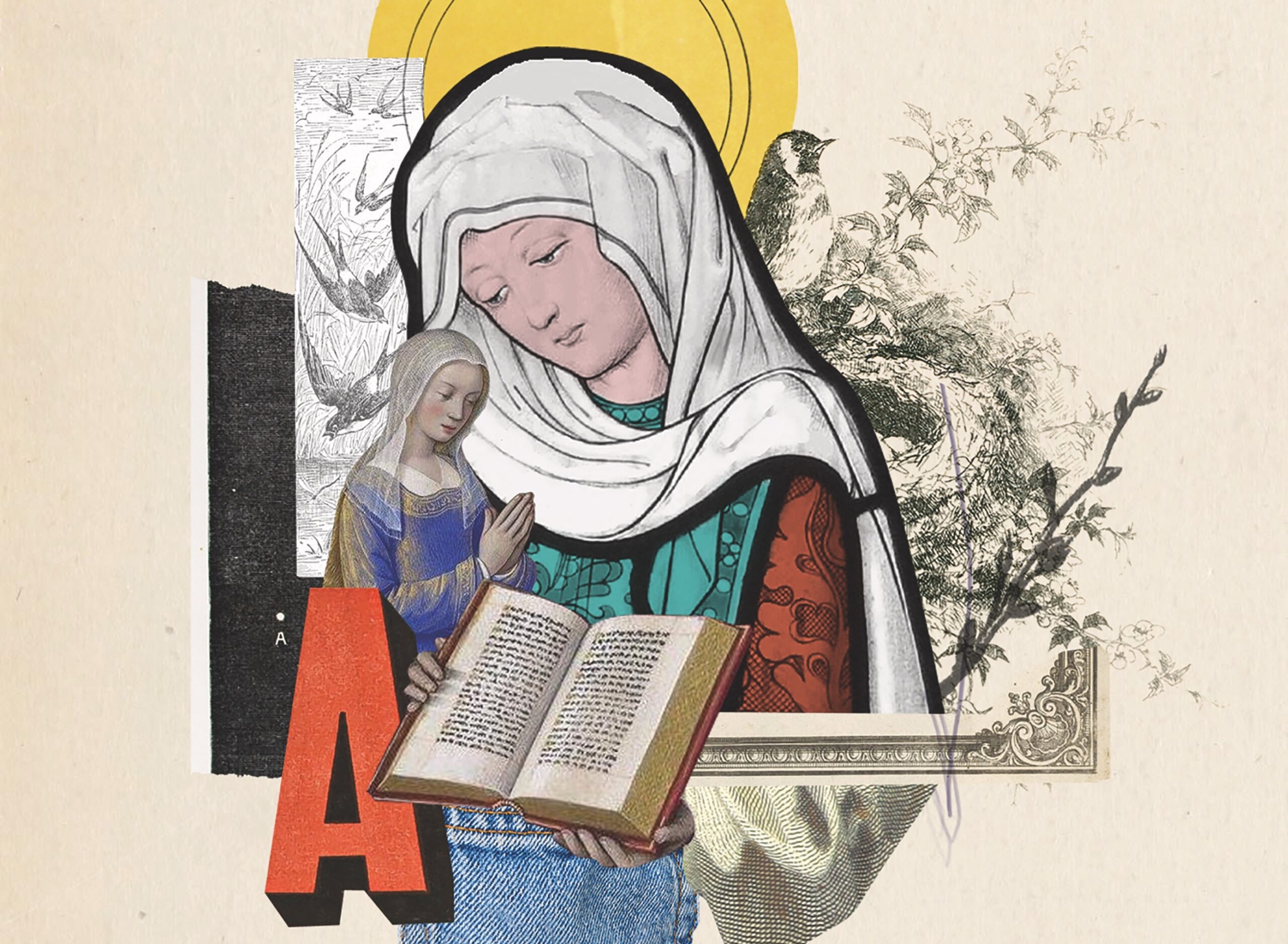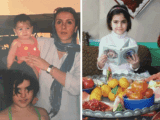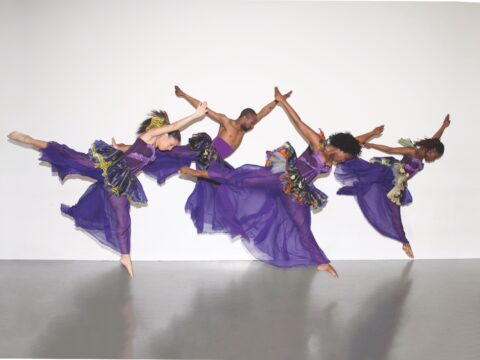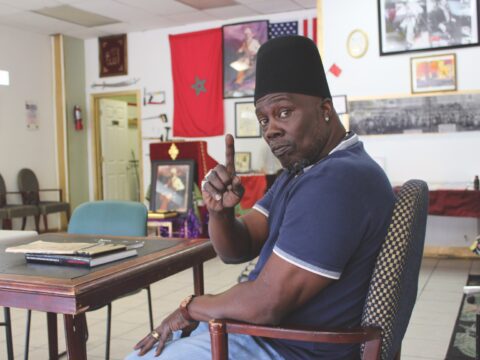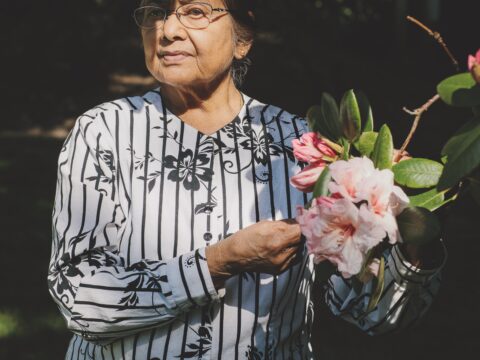Is there any name plainer than Anne? As a child with that name, I certainly didn’t think so. Sometimes it barely even seemed to qualify as one, just as a decorative hyphenated syllable or something tucked in among middle names. It’s old-fashioned, but not in a romantic way. Not even Anne Shirley or Anne Boleyn’s reputations can save it from seeming dour, or at least boring. I remember thinking that it wasn’t a little girl’s name; it was a name for an old woman. It seemed fitting, then, that my namesake saint was most famous for being Christ’s grandmother.
When I first learned about St. Anne, I didn’t find much to recommend her to me. Even though she’s recognized as the mother of the Blessed Virgin Mary, she doesn’t appear in any of the gospels included in the New Testament. We learn of her from the Gospel of James, a second-century infancy gospel (a type of apocrypha that provides an account of the early life of Jesus) that tells Mary’s story. Although the Protoevangelium, as the Gospel of James is also known, is non -canonical, it was very influential on early Christian doctrine regarding Christ’s mother.
You may unsubscribe from any of our newsletters at any time.
More on Broadview:
- There’s still room in my heart for St. Francis, even centuries after his death
- Meet the saint bringing comfort to those in isolation
Anne is mostly famous for the Immaculate Conception, which, contrary to popular misconception, refers not to Christ but to Mary, and means that she was conceived without the stain of original sin. It’s a miracle, of course, but nowhere near the more exciting accomplishments of saints I related to the most. Joan of Arc led the French army to victory; Catherine of Alexandria won debates against a Roman emperor’s sages and then broke the device that was supposed to kill her; Lawrence the martyr cracked jokes while he was roasted to death (which led to him becoming the patron saint of both comedians and cooks). Compared to them, Anne seemed so passive and, well, boring — the soccer mom of saints. All she did was pray to have a baby. Her daughter, at least, had the pizzazz of having a virgin birth in a stable.
You’d think that during my own anxious pregnancy I would have turned to St. Anne, whose patronages include mothers, women in labour and, yes, those who are expecting. Instead, before every prenatal appointment I trundled down to the shrine of Our Mother of Perpetual Help, conveniently just down the street from the Toronto hospital where I would give birth, and repeated the same prayer: “Please let the baby be okay, please let the baby be okay, please, Mary, let the baby be okay.” It was only this year, when I stumbled across a painting of Anne teaching her daughter to read, that I began to take my name-twin more seriously.

Anne educating Mary is a frequent theme in art and Catholic iconography. Sometimes the mother stands before her daughter, holding an open book for her to read. Sometimes they pore together over a scroll, Anne holding a stylus and pointing to some passage or other. Sometimes Mary leans comfortably against her mother while the latter reads aloud, both in a pose of relaxed affection. This last style is my favourite. When I look at those images, I see the nightly ritual my son and I have as we work through another chapter of whatever book we happen to be reading, his body curled up against mine.
As ahistorical as those images might be — early versions of bound books were only just coming into existence during Christ’s lifetime — I loved the idea of Anne being present and engaged in her daughter’s education. That thought sent me back to the Protoevangelium of St. James, where I found even more to admire about Anne.
More on Broadview:
- This church’s All Saints’ Day rituals are even more meaningful this year
- Anne Thériault on her spiritual journey to Geel, Belgium
The gospel begins with Anne’s husband, Joachim, being unable to participate in an important religious ritual because he has no children. He decides to go into the wilderness and fast until God speaks to him, leaving his wife at home alone. She’s in her own state of mourning; everything she sees, from a nest full of baby birds to the plants growing in the earth, reminds her that she has been unable to conceive a child. An angel appears, much like Gabriel will one day appear to her daughter, and tells her that she will have a child who will be spoken of the world over. Another angel appears to Joachim and tells him more or less the same thing. The rest of the gospel details Mary’s childhood, education and betrothal, and it ends shortly after Christ’s birth.
One of the things that struck me when reading the Protoevangelium this time was Anne’s age. According to some versions of her legend, she’s been married to Joachim for years, maybe even decades, and has likely grieved her struggles with fertility all that time. When she learns that she’s pregnant, she is ready to invest everything in this child, no matter what. Though Joachim was perhaps hoping for a son, when Anne finds out that she has given birth to a girl, she replies, “My soul is magnified this day.”
When Mary is three years old, her parents bring her to the Temple of Jerusalem. They’re making good on their promise to dedicate her life to God, but they’re likely also ensuring that she receives an education outside the home, which would have been a rarity for a girl in that time and place. So even if the later icons and paintings showing Anne teaching her daughter to read aren’t accurate, they’re true in a larger sense: Anne made certain that Mary was as learned as possible, regardless of who was doing the educating.
After bringing Mary to the Temple, Anne and Joachim disappear from the narrative, but there’s enough there to fire my imagination. I picture Anne as someone who is capable and doesn’t put up with nonsense. She’s not a fun, young, lipstick-wearing kind of mom; she’s the mom who says stuff like, “I’m here to be your parent, not your friend.” She’s the kind of mom you spend years saying you hope you never turn into, only to wake up one day and realize that, actually, you aspire to be her. I’ve aged into my St. Anne years the way I aged into high-waisted mom jeans: I resisted until I tried them on and discovered that they’re a great fit.
Faith needs to change with us throughout our lives. If it only suits us at one time, then it will quickly be outgrown. For those whose faith includes saints, the same thing applies to our relationships with them as we get older. I still love Joan of Arc, but as my son enters his preteen years, I don’t need a saint who can teach me how to break the Siege of Orléans; I need one who can teach me how to be a gentle parent in turbulent waters. I need a saint who helps me be patient with myself and those around me. I need a saint who shows me that some days, it’s okay to just be boring, because sometimes boring is necessary. I need a saint who looks like me: a tired mom reading to her kid at the end of a long day. It’s taken me a long time, but I’m glad I’ve finally found my way back to my namesake. I’m thankful that my parents chose her name for me with such love and care.
***
Anne Thériault is a writer in Toronto.
This story first appeared in the July/August 2021 issue of Broadview with the title “Aging into Saint Anne.”

